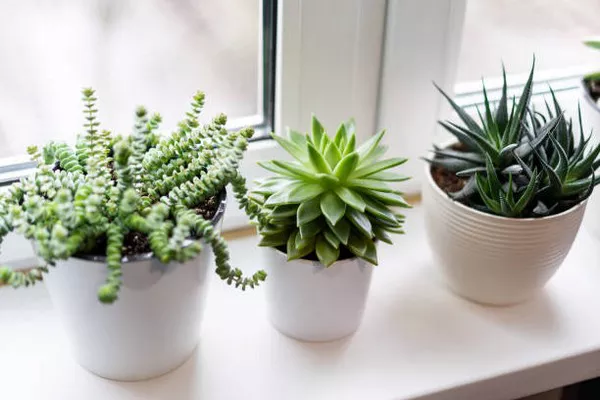Succulents are renowned for their remarkable ability to store water in their fleshy leaves and stems, making them well-suited to arid climates. However, even these resilient plants need appropriate care, especially during the scorching summer months.
Understanding Succulents
Before delving into the specifics of summer watering, it’s essential to have a fundamental understanding of succulents. Succulents encompass a wide variety of plants, including popular species like Echeveria, Sedum, and Crassula. These plants have evolved to survive in dry, often harsh environments by storing water in their leaves, stems, or roots.
The Role of Water in Succulent Health
Water is a critical component of a succulent’s life cycle. It is essential for basic cellular functions, including photosynthesis and growth. However, what sets succulents apart is their ability to store water efficiently, allowing them to endure long periods of drought. This adaptation is particularly advantageous in the summer when water may be scarce.
Succulents in Summer: Factors to Consider
Light Intensity: Succulents in summer receive more intense sunlight, which can increase water loss through transpiration. The amount of light your succulents receive will impact their water requirements.
Temperature: Higher summer temperatures can accelerate the evaporation of water from the soil and plant tissues. Succulents are sensitive to temperature fluctuations, so it’s crucial to monitor them closely.
Humidity: Low humidity levels, common in many summer climates, can cause water to evaporate from succulents more rapidly. This can affect how often you need to water your plants.
Container and Soil: The type of container and soil you use also play a role. Well-draining soil and pots with drainage holes are essential for preventing overwatering, a common cause of succulent problems.
How Often to Water Succulents in Summer
Check the Soil: The most reliable way to determine when to water your succulents is by checking the soil moisture. Insert your finger about an inch (2.5 cm) into the soil; if it feels dry at that depth, it’s time to water. Avoid watering if the soil still feels damp.
Water Thoroughly: When it’s time to water, make sure to water thoroughly. Water the soil until water starts draining out of the pot’s drainage holes. This ensures that the entire root system receives moisture.
Choose the Right Time: Water your succulents in the morning to allow excess moisture to evaporate during the day. Avoid watering in the evening, as damp conditions overnight can encourage fungal growth.
Adjust for Container Size: Smaller pots dry out more quickly than larger ones, so you may need to water mini succulents more frequently than those in larger containers.
Monitor for Signs of Thirst: Keep a close eye on your succulents for signs of dehydration. These may include wrinkled or shriveled leaves, overly soft or limp stems, or a generally wilted appearance.
Consider Location: If your succulents are outdoors, those in direct sunlight will likely need more water than those in partial shade or indoors. Be mindful of where you place your plants.
Use a Well-Draining Soil Mix: Ensure that your succulents are planted in a well-draining soil mix. This allows excess water to escape easily, reducing the risk of root rot.
Adapt to the Species: Different succulent species have varying water requirements. Research the specific needs of your succulents to provide tailored care.
Overwatering and Underwatering
Two common pitfalls when it comes to succulent care in summer are overwatering and underwatering.
Overwatering: Excessive watering can lead to root rot, a condition where the roots become waterlogged and begin to decay. Signs of overwatering include yellowing or translucent leaves, mushy stems, and a foul odor emanating from the soil.
Underwatering: On the other hand, underwatering can cause succulents to become dehydrated and stressed. Signs of underwatering include shriveled or wrinkled leaves, dry and brittle stems, and slowed growth.
To avoid these issues, it’s crucial to find the right balance in your succulent watering routine.
Succulent Watering Tips for Specific Situations
Indoor Succulents: Indoor succulents typically require less frequent watering than outdoor ones. Ensure that your indoor succulents receive adequate indirect sunlight and maintain proper humidity levels.
Outdoor Succulents: Succulents planted outdoors may require more frequent watering, especially during heatwaves. However, they should still be watered sparingly compared to other garden plants.
Mini Succulents: Mini succulents have smaller root systems and may dry out more quickly. Monitor them closely and adjust your watering schedule accordingly.
Succulent Arrangements: Succulen
t arrangements in containers or terrariums may have different watering needs based on the mix of species and container size. Pay attention to individual plant requirements within the arrangement.
Propagation: Succulent propagation often involves young, delicate plants that require gentler watering. Use a spray bottle or a small amount of water when caring for propagations.
Common Questions About Summer Succulent Care
Can succulents get sunburned in the summer? Yes, succulents can get sunburned when exposed to intense, direct sunlight for prolonged periods. Gradually acclimate them to full sun, and provide some shade during the hottest part of the day if necessary.
Should I mist my succulents in summer? Misting is generally not recommended for succulents, as it can lead to fungal issues. Instead, focus on thorough, infrequent watering at the root level.
What if my succulents are in a closed terrarium? Closed terrariums create a unique microclimate with high humidity. Water these succulents sparingly, as the enclosed environment retains moisture for longer.
Conclusion
Successfully caring for succulents in summer requires a delicate balance between providing adequate hydration and preventing overwatering. By understanding the factors that influence your succulents’ water requirements and following the guidelines outlined in this comprehensive guide, you can ensure that your succulents thrive during the hottest months of the year. Remember that each succulent is unique, so regular monitoring and adjustment of your watering routine are key to keeping these fascinating plants healthy and vibrant all summer long.


